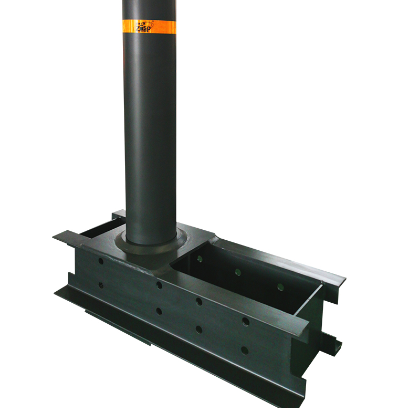Removable bollards are an excellent solution for areas where temporary security and access control are necessary. They offer the flexibility to be installed when needed and removed when access needs to be restored. These bollards are particularly useful for managing vehicle access in places like parking lots, pedestrian areas, and driveways. Before purchasing removable bollards, there are key factors to consider, from materials and installation to security features. In this guide, we will cover what you need to know about buying removable bollards to make an informed decision.
1. Understanding the Purpose of Removable Bollards
Removable bollards provide a flexible, temporary barrier for controlling vehicular access. Unlike fixed bollards, they can be easily installed and removed based on specific needs. Common applications include controlling access to pedestrian zones, emergency lanes, restricted parking areas, and protecting storefronts or other vulnerable areas from vehicles. Understanding the intended purpose of the bollards will help you select the right type for your project.
2. Materials: Durability and Aesthetic Appeal
The material used in the construction of removable bollards plays a significant role in their performance, durability, and appearance. The most common materials include:
- Steel: Steel bollards are highly durable and provide excellent impact resistance, making them ideal for areas requiring enhanced security. They are typically galvanized or powder-coated to prevent corrosion and rust.
- Aluminum: Aluminum bollards are lightweight, making them easier to remove and install. While they are not as strong as steel, they offer sufficient protection for lower-risk areas and are corrosion-resistant.
- Stainless Steel: Stainless steel bollards offer the best combination of durability, corrosion resistance, and aesthetics. They are more expensive but provide long-lasting protection with minimal maintenance.
- Plastic or Polyethylene: These bollards are often used for visual barriers or temporary applications where impact resistance is not as critical. They are lightweight and affordable, but offer little security compared to metal bollards.
Choose the material that best suits the security and aesthetic needs of your location. For high-traffic or high-security areas, steel or stainless steel bollards are typically the best option, while lighter materials can be used for decorative or low-impact applications.
3. Locking Mechanism and Security Features
Security is a critical consideration when selecting removable bollards. The locking mechanism ensures that the bollards stay in place when installed and cannot be easily removed by unauthorized persons. There are different locking options, including:
- Keyed Locks: The bollard is locked into place using a key, offering a secure and straightforward mechanism for authorized access.
- Padlocks: Padlocks provide a simple, low-cost locking solution but may be less secure than integrated locks, as they can be cut or tampered with.
- Lift-out Systems: Some bollards feature a lift-out design where the bollard can be removed from its sleeve when unlocked. This system is ideal for areas that require regular access changes, but it’s essential to ensure the bollard fits securely in the ground sleeve to prevent tampering.
Consider the level of security you need for your location and choose a locking system that offers the best protection without compromising convenience.
4. Installation Considerations
Proper installation is crucial to ensure the bollards function as intended. Removable bollards typically require a ground sleeve or base that is installed into the surface (concrete, asphalt, etc.). The bollard is then inserted into the sleeve and locked into place. Here are some key points to consider during installation:
- Surface Type: Ensure the bollard’s base or sleeve is suitable for the surface where it will be installed. Most bollards require a solid foundation, such as concrete, to anchor them securely.
- Ground Sleeve Quality: The ground sleeve should be robust and resistant to weather, moisture, and corrosion. A poor-quality sleeve can compromise the bollard’s stability and security over time.
- Drainage: For outdoor installations, ensure proper drainage is in place to prevent water from collecting in the ground sleeve, which can lead to rust or damage to the bollard.
Hiring a professional installer is often recommended to ensure the bollards are correctly installed and secured for maximum effectiveness.
5. Size and Height Options
Removable bollards come in various sizes and heights, depending on the specific needs of your project. Taller bollards are more visible and provide better deterrence, while shorter bollards are less intrusive and blend better with their surroundings. Consider the following:
- Traffic Control: For areas where visibility is important, such as busy streets or pedestrian crossings, taller bollards (36 inches or more) are recommended.
- Aesthetic Appeal: Shorter bollards may be preferred in areas where aesthetics are important, such as shopping centers or parks, as they offer a lower profile without compromising function.
- Impact Resistance: The diameter of the bollard will also affect its ability to resist impact. Wider bollards offer greater protection but may be more cumbersome to remove and install.
Be sure to choose the right size and height based on both the security requirements and the visual impact you want to achieve.
6. Cost Considerations
The cost of removable bollards can vary greatly depending on the material, size, locking mechanism, and installation requirements. Steel or stainless steel bollards tend to be more expensive due to their durability and impact resistance, while plastic or aluminum options are more affordable but offer less security. Additionally, consider the long-term costs, such as maintenance and potential replacements.
Questions and Answers About Buying Removable Bollards
Q1: Can removable bollards be used for high-security areas?
A: Yes, removable bollards made from durable materials like steel or stainless steel with advanced locking mechanisms can be effective for high-security areas. They provide the flexibility to control access while offering strong protection against unauthorized vehicles.
Q2: How often do removable bollards require maintenance?
A: The maintenance schedule depends on the material and environmental conditions. Metal bollards may need occasional cleaning and rust prevention treatments, while plastic or aluminum bollards require less maintenance. It’s important to inspect the locking mechanisms regularly to ensure they function properly.
Q3: Are removable bollards suitable for residential properties?
A: Yes, removable bollards are a great option for residential properties, especially for securing driveways or private parking spaces. They can be easily installed and removed as needed without permanently altering the appearance of the property.
Conclusion
Removable bollards offer a flexible, convenient, and effective solution for controlling access and enhancing security in various settings. By considering factors such as material, security features, installation requirements, and size options, you can choose the best bollards for your needs. While they require an initial investment and some maintenance, the long-term benefits make them an excellent choice for many applications, from securing pedestrian zones to protecting private properties.



